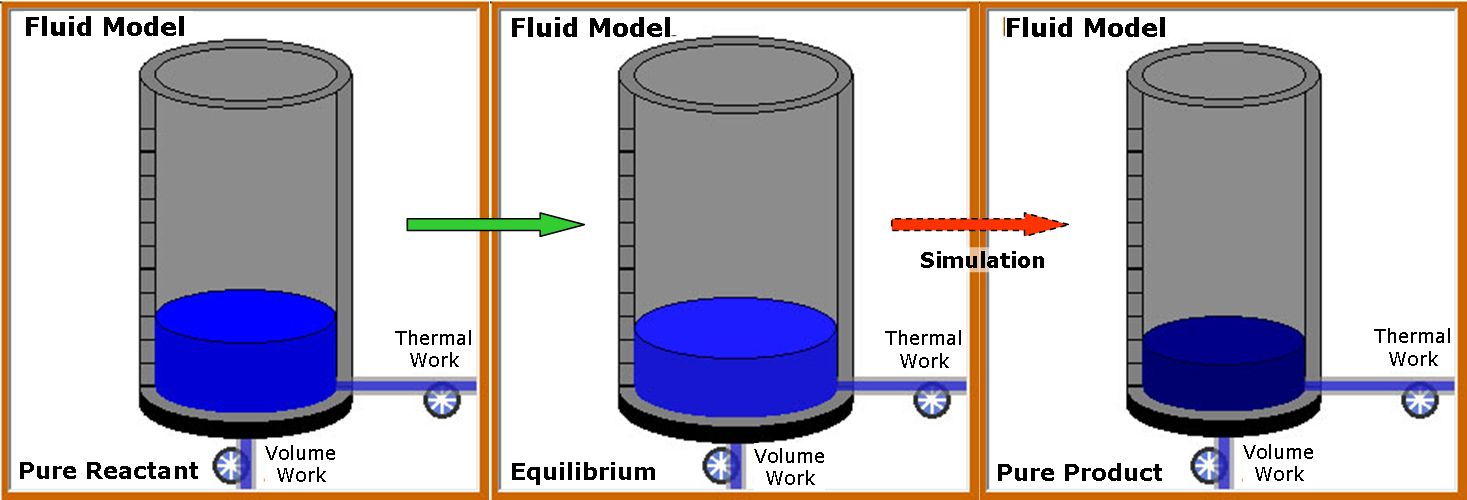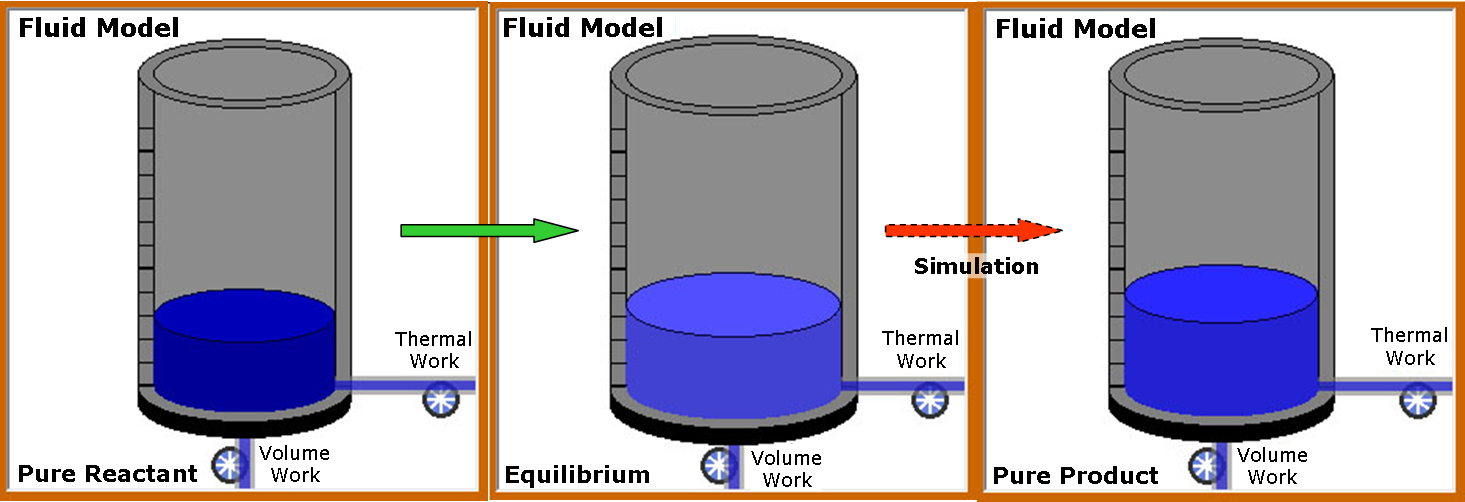The individual experimental steps are completely analogous to the endothermic process. This time, two fluids react with each other. After removing the partition wall and shaking, the temperature rises in 10s around 16K. |
Interpretation for both attempts: In the first experiment, solid ammonium chloride reacted endotherm with distilled water and formed hydrated ions. A neutral substance splits endotherm into opposite-charged ions. The endothermic core of this reaction consists of the cleavage of the ionic bond. Although the ions of the solid salt become exothermically hydrated here, the ion-dipole interaction in the hydrate shell is weaker than the ion-ion interaction in the solid salt, so that overall the endothermic influence predominates. The ion-dipole bonds between the hydrate water dipoles and the hydrogen or hydroxide ions are split and the two central particles form a polar atomic bond. The water molecules of the hydrate shells are written in the reaction equation on the product side separately from the newly formed water molecule. We must be aware, however, that all water particles are indistinguishably inserted into the water clusters. The exothermic nucleus of this reaction consists in the formation of a polar atomic bond from two far-distant ions with opposing charges. Although the bonds of the hydrate shells must be destroyed endothermically, they are partly re-formed in the exothermic cluster formation. It is, therefore, obvious to attribute the temperature change mainly to the formation of the atomic bond.
|

